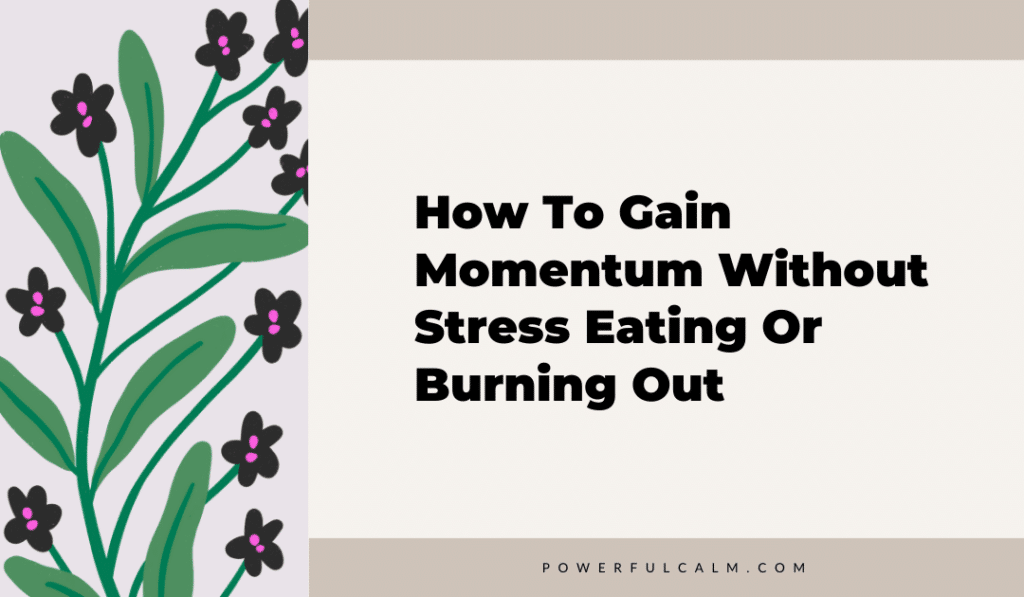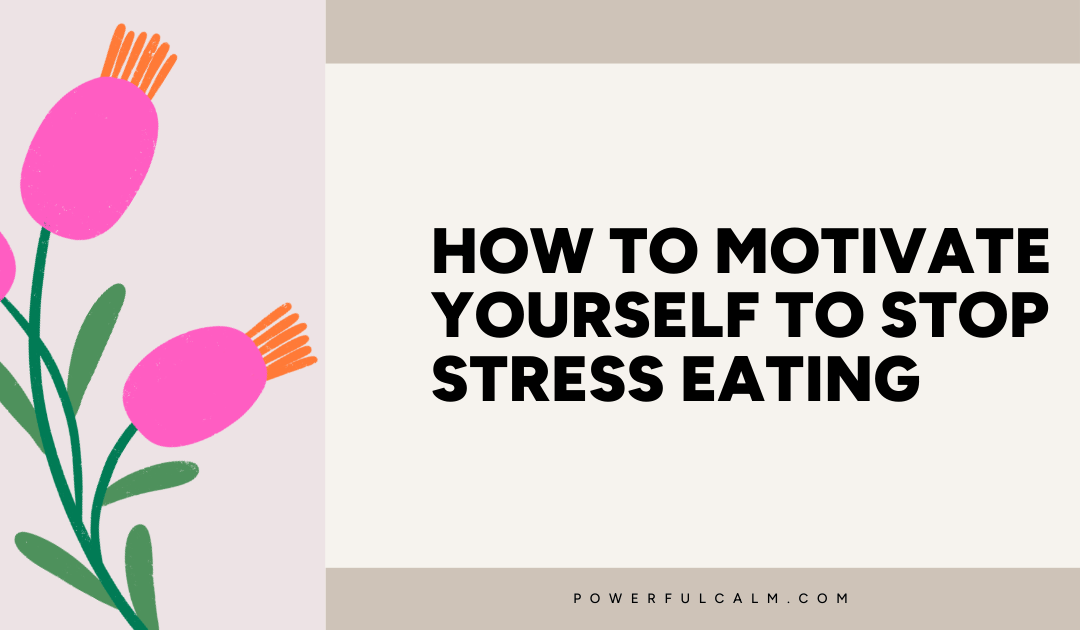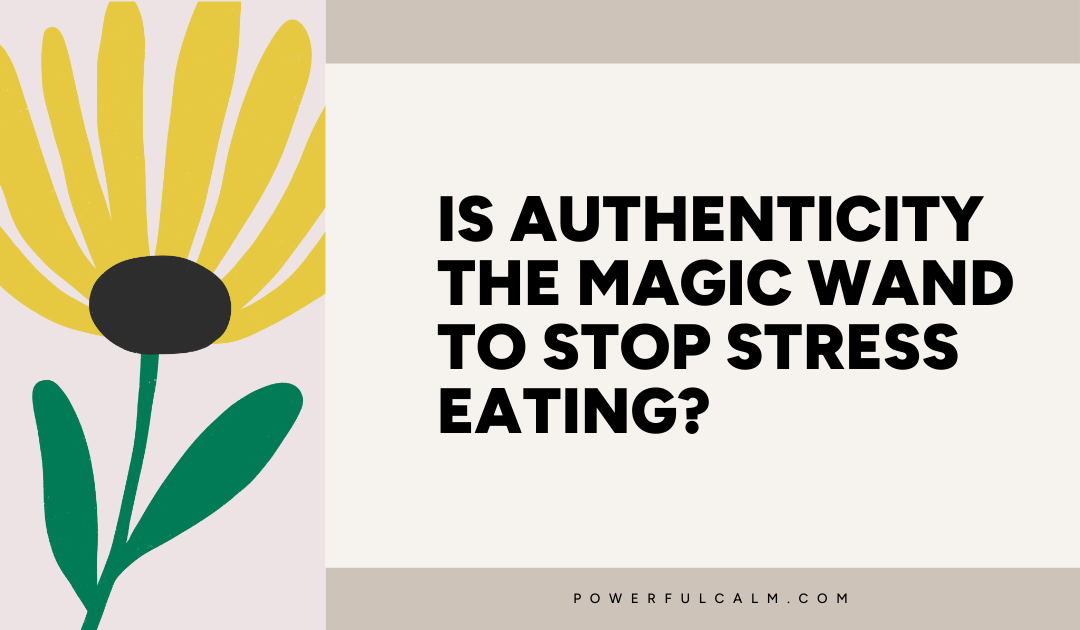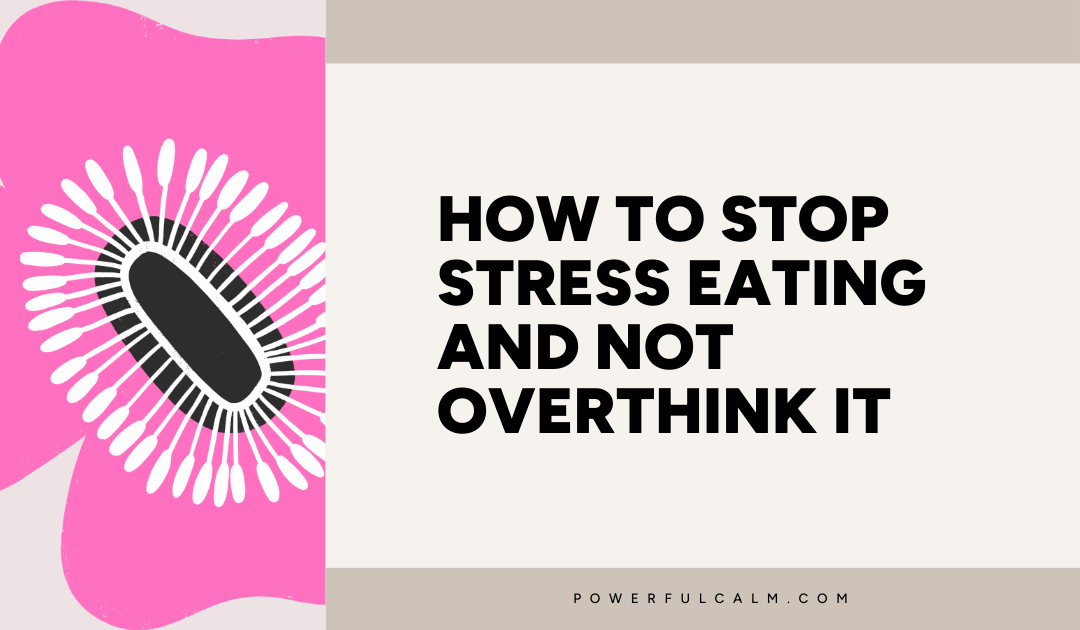
Learn the 5 steps needed to keep up your forward momentum without stress eating or burning out.
Cathartic – bringing about relief from strong emotions, usually by expressing them (Merriam-Webster).
We are encouraged to “just get it out and you’ll feel better,” which is true often. Most of my clients feel relieved when they talk through pent-up feelings. It’s the feeling of a weight being lifted off their shoulders. And the result is feeling less stressed, even for a little bit.
Sometimes, an epiphany, spark, insight, or whatever it is called will happen, but that is rare.
Simply understanding why or when stress eating starts rarely stops it in the future, and your forward momentum without stress eating requires different skills.
Waiting for the ‘why’ to appear wastes your time and energy. You can use energy to create momentum that moves your life in a less stressful and more positive direction.
Momentum provides the energy for action-taking so that you receive what you need.
Instead of spinning around in circles, re-experiencing the emotion repeatedly, harness that energy and use it to transform your relationship with stress eating and burnout.
You can propel your life into a life of kindness, self-compassion and fulfillment. You can change your relationship with yourself and keep up your momentum without stress eating and burning out.
The key is to increase your emotional awareness so that you know how to support yourself when you experience a specific emotion.
Right at the beginning, the most challenging part of the process is the decision to act, and the rest is focus and tenacity.
Even when stress is high and you feel spen,t youcan stilln make changes that matter.
The Stages of Change Model is a great framework to understand the change process. Carlo C. DiClemente and J. O. Prochaska conceptualized these changes based on their research about how people can move out of addiction. Many studies have shown that the process is the same regardless of whether it’s addiction, a job, an organization, or stress eating.
There are five stages of change:
- Pre-contemplation – not ready or not aware that there’s a problem.
- Contemplation – knowing there’s a problem and you want to do something about it but are not ready yet.
- Determination – you make a plan on how to solve the problem.
- Action – you take action on your plan to solve the problem.
- Maintenance – you do what you need to do to maintain the solution.
Since you’re reading this article, you’re most likely in the contemplation stage. You know there’s a problem. You want to change it, but you’re unsure how it’s getting to you. Another thought might be that you don’t know if the solution will be any better than the current one, even when you know it’s not helpful. Lastly, you might not be ready to give up the solution, no matter how much it pains you.
The next stage of determination is when you’re making the plan and using the tools below to help you develop your plan to stop stress, eating and burning out. Your hope is growing and you’re optimistic that life will be better without stress eating.
Action is the stage where you implement your plan and make adjustments as needed. As you progress in this stage, you’ll experience relief from stress eating and the peace of Conscious Eating.
Below is a plan to help you move through these three middle stages of change. Moving through the stress is worth the effort, so you can live free from stress eating and prevent burnout.
Here is the 5-step process to work with your feelings and gain momentum without stress eating or burning out.
1. Get the feeling out.
This is where it’s all about catharsis. Get the feeling out of your head and on paper through journaling, in conversation with someone, in artwork, etc. Just get it outside of yourself so you can get a little distance from it living inside you.
Go outside and experience the feeling while getting fresh air and perspective.
Focus on how you experience the feeling and any new insight about it.
Allow yourself time to understand the feeling as you experience it. The more you consciously experience the feeling, the more awareness of what can help increases.
2. Specifically, identify the feeling.
The next step is to increase your knowledge of the feeling you’re experiencing.
What sense do you have of the feeling?
What does it feel like in your body?
Does the feeling increase anxiety, anger, impatience, or something else?
This will help you figure out what you need to calm the feeling.
When you listen to what your mind, body and heart communicate, you’ll have the necessary information to move to the next step.
3. Specifically, identify the feelings surrounding the situation.
Take note of the more minor feelings that pop up as you spin around the feeling that’s got your attention.
What other aspects of the feeling are you noticing? Sometimes, it’s helpful to think of them as sub-feelings. Think of them in terms of percentages. It might be 10 percent of one feeling, 30 percent of another, 70 percent of a different one.
These feelings add to the quality of the main feeling you’re experiencing. They will help you understand your relationship with yourself more fully.
They also help you to define what you need from yourself, your body and others.
4. Specifically, define what you need.
Now that you have a pretty good idea of the qualities of the feeling you’re experiencing and the more minor feelings that help to shape your experience.
Take a step back and look at the big picture –
What is it that you wish you could have to make it better?
Are there skills that could calm or soothe the feeling?
What will get you closer to your goal?
5. Now, take a few minutes and think about a variety of choices you can make to move you closer to living your life more fully, more consciously.
This can even include “not yet.” It’s okay to take time for planning. The challenge is increasing your awareness of when you’re scared and procrastinating so you’ll know when it’s time to take the leap and get moving.
Conclusion
Getting started is often the most challenging part of any journey. Moving from a standstill takes more energy than taking one step after another. When you feel burned out, it takes even more energy. Yet, when you change a bit at a time, it adds up and can change everything.
Most of the time, people get overwhelmed by feelings because they’ve never known that understanding your emotions is a skill that can be learned at any point in life. Gaining momentum without stress eating or burnout is easier when you have a framework to manage your emotions. Today is the day that changes for you!



